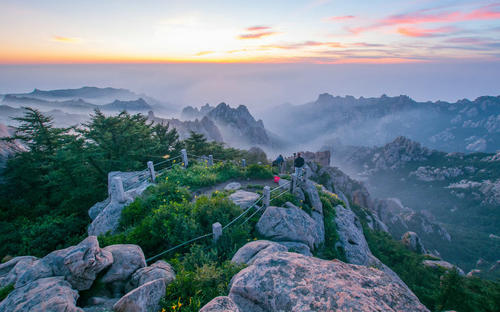
Location:Laoshan District, Qingdao, Shandong Province, China.
With its religious position in China natural spot, Mt. Laoshan is located by the seaside of East China Sea along the coastline, about 40 kilometers from downtown Qingdao. It is called the No.1 religious mountain because Mt. Laoshan is one of the "Cradles of Taoism". At the peak of Taoism, there were nine palaces, eight Taoist temples, and 72 nunneries that housed nearly 1,000 Taoist priests and nuns on the mountain. At present, the Taiqing Palace is the largest and oldest among the preserved Taoist establishments.
The entire mountain covers 446 square kilometers and has 218 places of interest, big and small. It is a famous Taoist mountain boasting both mountainous and coastal scenery. The highest peak of Mt. Laoshan is the 1,133-meter Jufeng, the highest one along the 18,000-kilometer coast of China and the second highest mountain in Shandong province. In ancient times, the emperors of Qin and Han dynasties climbed the mountain to seek immortals. Emperor Tang Minghuang also sent people to make pills of immortality here.
The natural scenery also makes Mt. Laoshan as a perfect place for sightseeing, holidays, recreation, recuperation as well as cultural and patriotism activities. Towering cliff, deep abyss and rocks of untold shapes are so common in Laoshan that they can be seen everywhere. To top all this, the internationally - marketed Tsingtao beer is brewed using the water at Laoshan.
Mt. Laoshan is known for its oddly shaped rocks, ancient trees, and crystal-clear springs. Among the most famous springs are the Tianyi Spring on the mountaintop, the Shenshui (Immortal Water) Spring in the Taiqing Palace, and the Shengshuiyang (Ocean of Holy Water) Spring in the Shangqing Palace. People say the mineral water produced here can cure chronic diseases.




